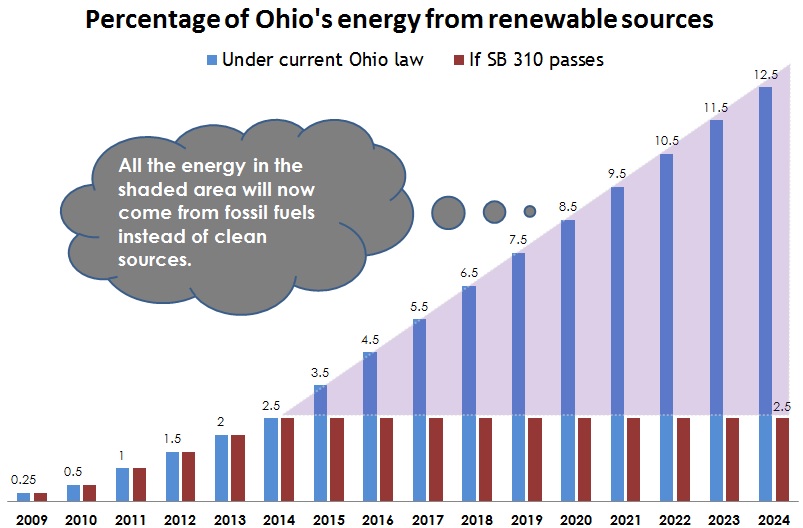What you need to know about Ohio Politics and Policy
Terra Goodnight · April 28, 2014
Ohio may eliminate clean energy requirement, pass up green jobs
Ohio lawmakers are poised to short-circuit an emerging industry that has created thousands of new jobs in recent years, in the process undermining efforts to clean up the air, reduce climate-changing emissions and save consumers billions in electricity costs. Renewables — including wind, solar, biomass, hydro, geothermal and ocean energy — supply 16.7 percent of the world’s energy. The U.S. still lags other nations in shifting to clean energy, with only 4.7 percent currently derived from renewables, but these sources represented 39 percent of new U.S. power capacity added in 2011. The shift to clean energy represents a considerable investment. A recent report from the UN’s Environmental Program and Bloomberg found that worldwide investment in renewable power is set to surpass investment in fossil fuel technologies — $260 billion in 2012 alone. With that investment comes jobs. In Ohio, the advanced energy sector employs 25,000, and that number is growing rapidly, thanks in large part to the state’s renewable energy standard. The law, in effect since 2009, requires an increasingly larger share of the state’s electricity supply to be derived from nontraditional sources. By 2025, fully 25 percent of the state’s electricity must come from advanced sources, with 12.5 percent of that from clean, renewable energy. Because of that guaranteed market for clean energy, developers are making large investments in Ohio projects. The standard is estimated to have led to the creation of over 3,000 new jobs and AEP alone says that its plan to comply with the law will create 4,000 more clean energy jobs. Now Ohio legislators, at the urging of the state’s electric utilities, may change all that. New legislation — Senate Bill 310 (text) — would eliminate the standard, requiring only that utilities continue to produce 2.5 percent of their energy from renewable sources, the level in effect in 2014. The UNEP/Bloomberg report observed that “the main issue holding back investment in renewable power and fuels was the instability in the policy regime in key markets.” Thanks to the uncertainty about Ohio’s future demand for renewable energy created by SB310, investors will likely locate in states where utilities are required to purchase renewable energy. Fully 37 states and the District of Columbia have renewable energy standards, so developers have their pick of alternative sites for new energy projects. Unfortunately, thousands of jobs could leave Ohio with them and Ohio utilities will continue to produce 97.5 percent of its energy from traditional fossil fuels. SB 310 is slated for a fourth hearing in the Senate Public Utilities committee on Wednesday.Tagged in these Policy Areas:



